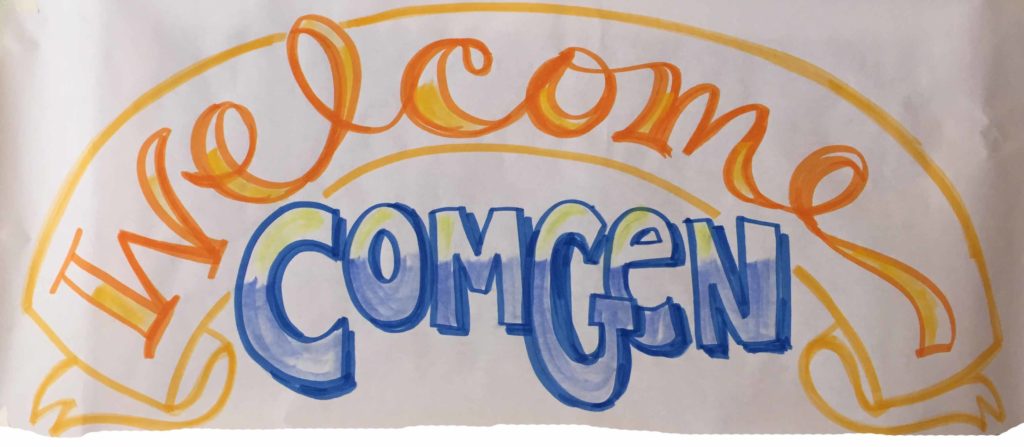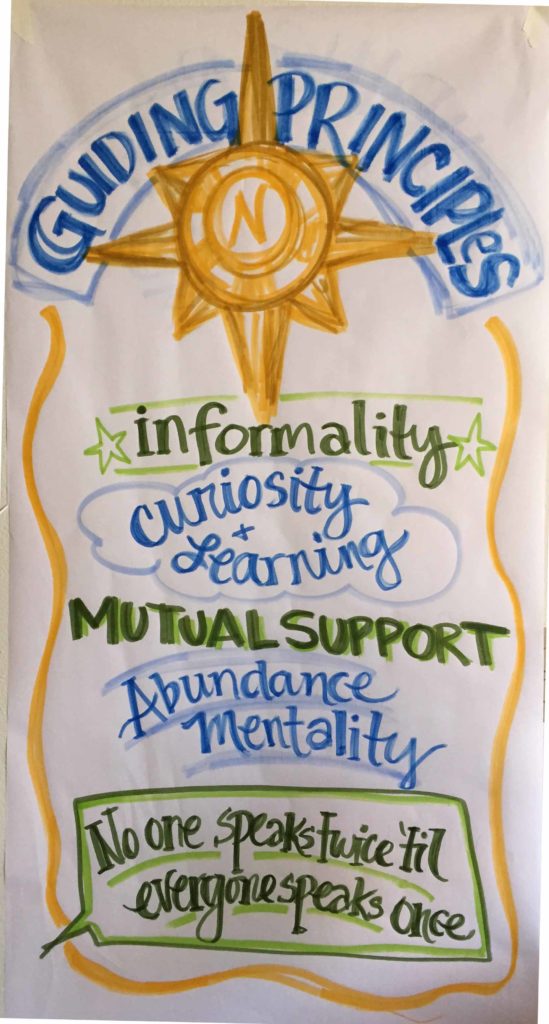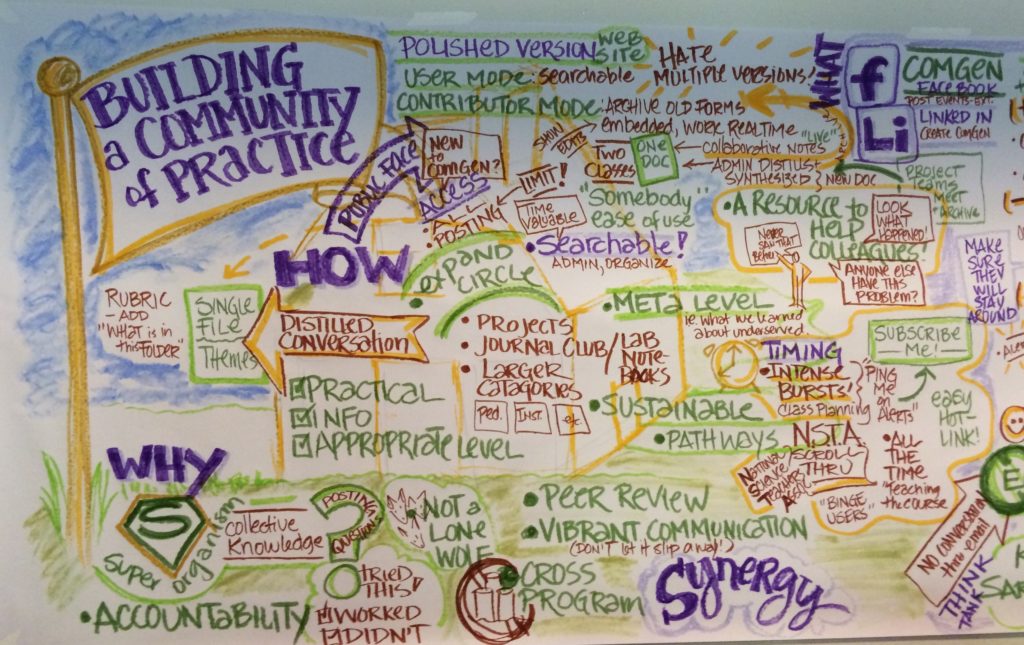 An alternative to death-by-meeting
An alternative to death-by-meeting
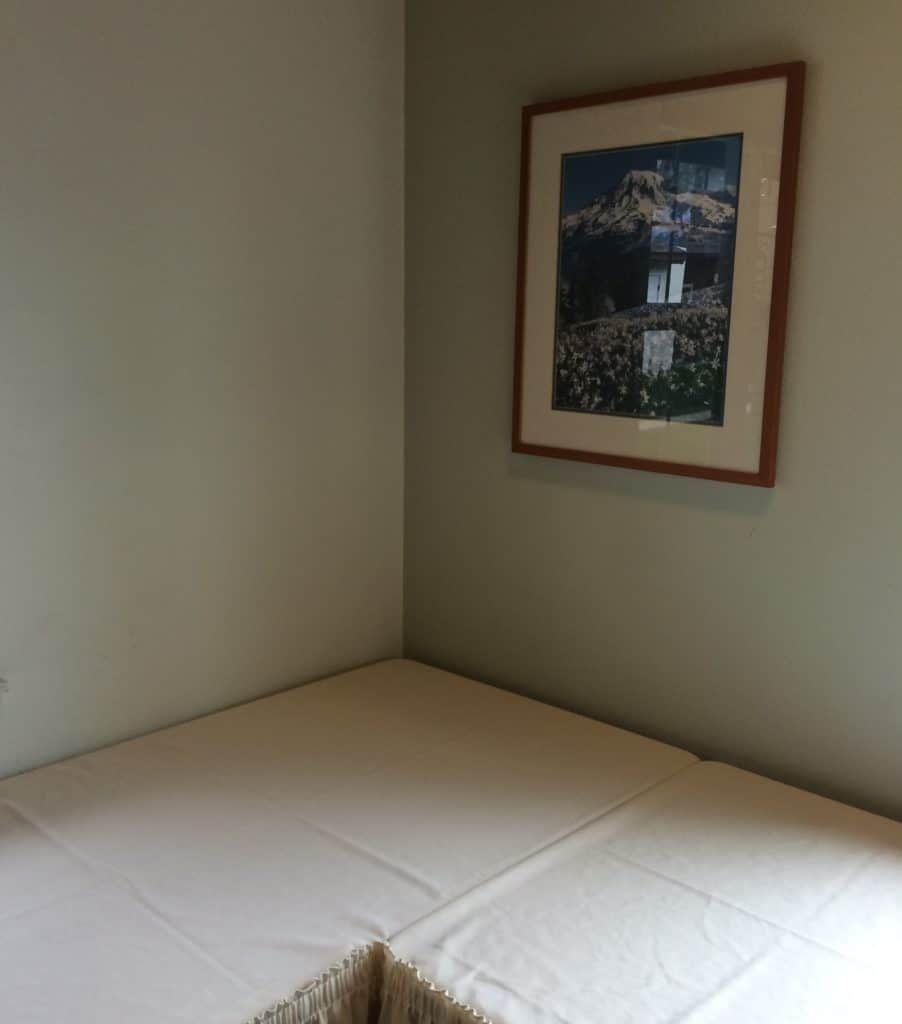 If you’ve worked in organizations, you probably know the drill:
If you’ve worked in organizations, you probably know the drill:
You drive to a conference site, arrive tired, check in, then walk the long corridors to the back of your hotel. You enter the room (cave) where you’ll be captive over the next three days, noticing its uber-blandness:
- Beige walls
- Gray-green carpets
- White table cloths
- A blank flip chart on a stand
- Ice that’s been melting in the water glasses
- A few “cheery” prints on the walls and a fake rhododendron. (Assuming you’re spared any pseudo-motivational posters!)
You heave a sigh, put your stuff down, check your phone for signs of life anywhere else on the planet, and settle in for the drill:
- The facilitator announces the really critical stuff: where the bathrooms are and when’s lunch.
- You’re told the “guiding principles” for the event (as if you needed to be told what you should have absorbed in kindergarten – play nice and listen.) Then you go through an agenda you’ve already seen.
- You’re invited to introduce yourself in a room where everyone is too busy thinking about their own spiels to listen to yours.
- You have a flash thought that maybe this is the day to try out your new identity as a stand-in for Smokey the Bear or a retired table dancer.
- You withdraw above idea.
Then you notice that something’s different.
- A hand colored graphic banner announces, “Welcome” with the name of your group in big block letters.
- A bouquet of fresh flowers breaks up the sterile environment with a hint of color and fragrance.
- The group’s “guiding principles” are hand printed in bold colors on a large vertical banner – so no one has to announce what everyone can read. A big picture agenda maps the journey that you’ll be taking.

- A large graphic template tacked to the wall with a timeline for your organization suggests an interesting exercise to come.
You notice two facilitators: one who works with the group and guides the conversations while the other, her back turned to the group, visually records interesting snippets taken from each member’s sharing. During the opening round of introductions, she creates a visual map of the group – punctuated with cartoons, icons, lines and doodles.
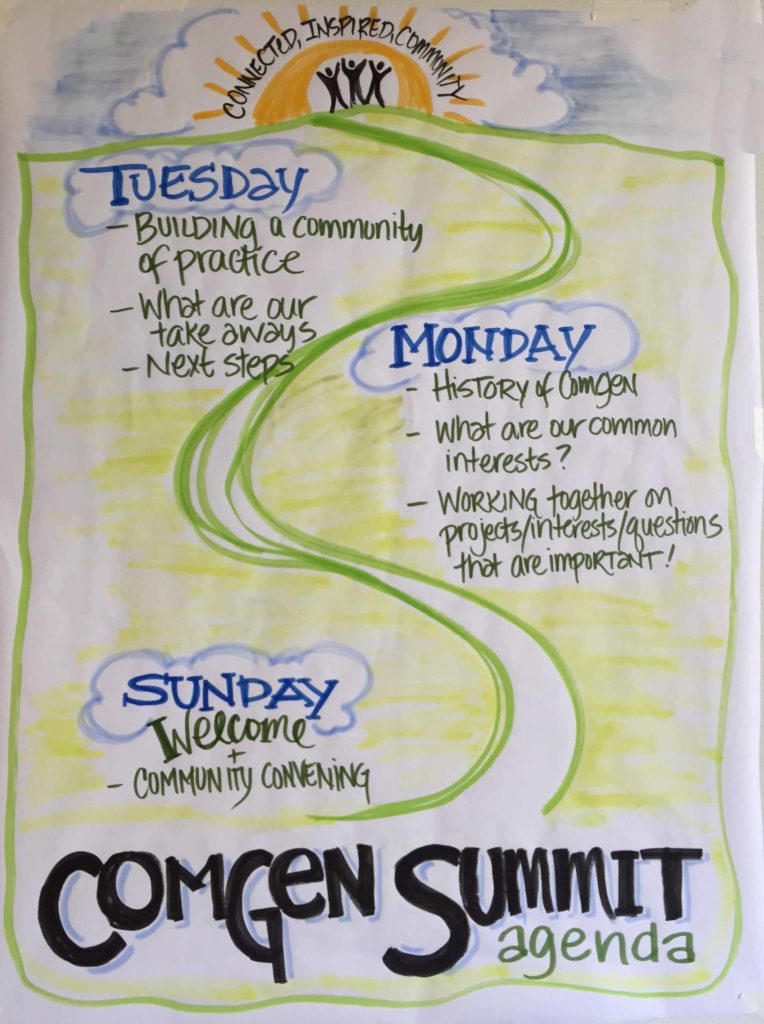
You’re tempted to doodle with the arsenal of colored pens put out on your table, and begin to think that this meeting might even be fun.
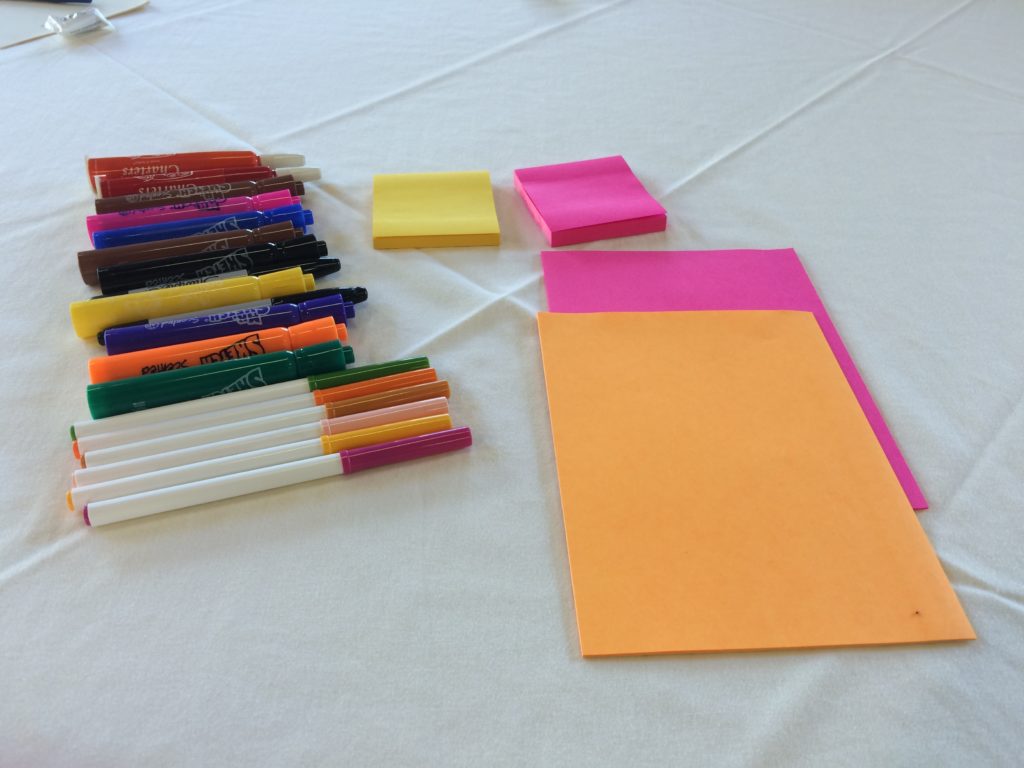
Last week I had an opportunity to facilitate such a retreat in tandem with my friend and graphic facilitator, the talented Claire Bronson of Viz-Spark.
Drawing from her large wicker basket of fat colored markers, Claire translated the group’s ideas, insights and decisions into visuals.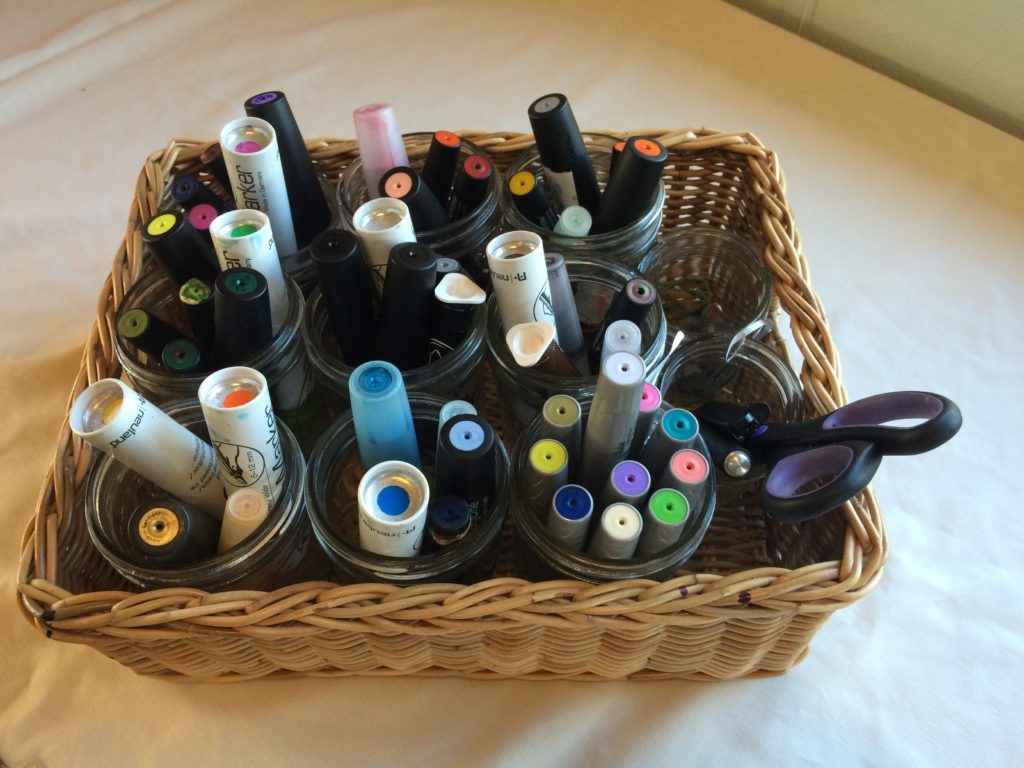
As poster after poster filled the walls, our room became a colorful collaboratory, delighting the great group of science educators with whom we were working.
I watched participants sneak over to Claire as she stood with her back to the group, trying to understand how she so imaginatively captured the essence of what everyone was saying.
Claire encouraged them to start playing with their own visuals, telling them, “you don’t have to be an artist and everyone can draw at least stick figures.”
By the end of the retreat, she had created a visual record of the group’s accomplishments to photograph and send out to the group.
The Art of Graphic Facilitation
Graphic facilitation is a way to enliven long meetings and retreats, clarify understandings, spark creativity, create a visual record, and help people remember the key points from their work. Increasingly, it’s being used at large scale events, meetings and conferences, where it can provide a visual backbone for planning and group conversation. (Read more here. ) 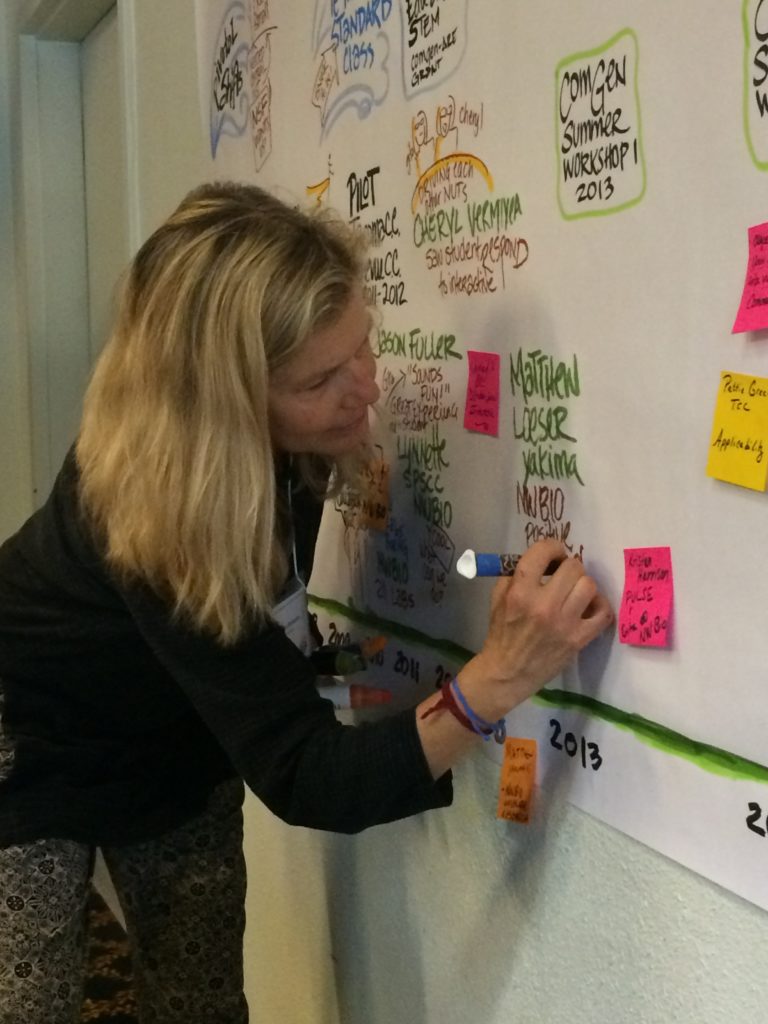
To learn the inside scoop about graphic facilitation, I interviewed Claire, who brings extensive training and experience in design, facilitation and art to her work:
SF: What’s the most challenging part of being a graphic facilitator?
CB: Listening. Staying present to what’s being said. You have to be present with it – yet hold it lightly. You can’t capture everything [being said]. You just get to capture the snippets – trying not to get swamped in the story and the detail.
It’s a delicate balance. There’s a lot of synthesis and distilling going on.
SF: And how do you keep recording someone when someone else starts to speak?
CB: You do the best you can. You can ask for help. It’s ok to speak up and ask for clarification. I always feel that even though I have my back to the group, I’m a part of the group.
SF: I felt like you were very connected to the group.
CB: It’s weird to have your presence come from your back. You have to be aware of your back body – it’s a part of our bodies we don’t think about a lot. You can’t see your back but you’re absorbing energy through your back.
[When you are recording] people will be looking at your back so you want to make sure that it’s kind of interesting. I once wore a scarf down my back and a colleague came up to me and said, “I get it! You have to make your back interesting!”
SF: Anything you learned about having a “dynamic back” in visual facilitators’ school?
CB Make sure you wear long clothing or a jacket. You always want to cover your butt! (laughing)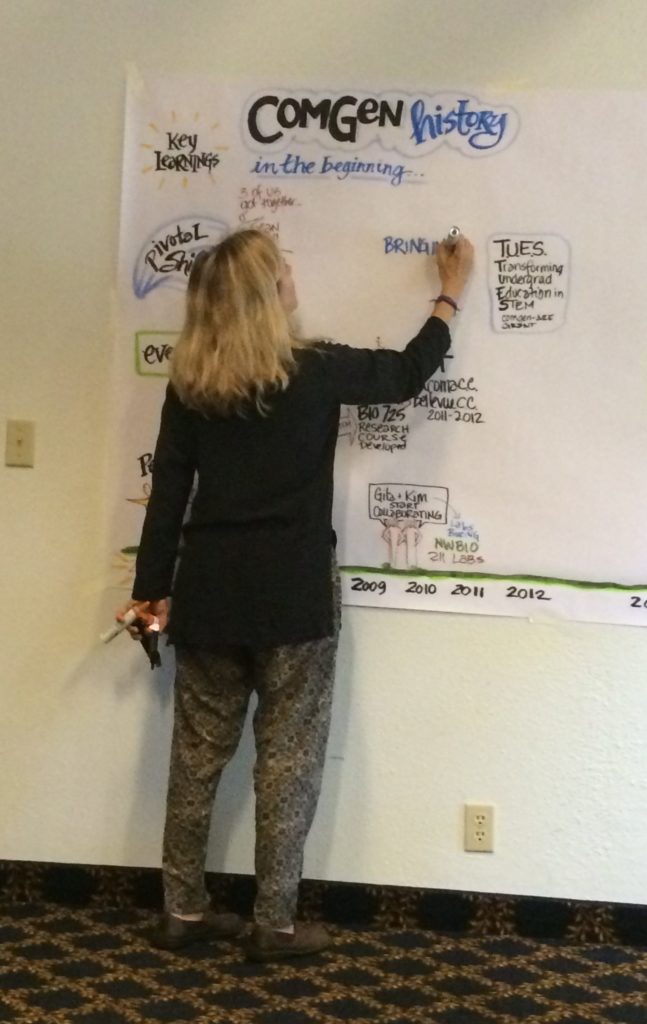
SF: You usually work in tandem with a facilitator who is managing the group while your back is to the group…
CB: It’s such an essential thing to work with a facilitator.
[Although Claire occasionally runs small meetings by herself.]
SF: Are you usually a partner in the design phase of the retreat?
Yeah – although sometimes I get called in to just record – like for a speaker at a keynote. Then, I will work with the speaker [ahead of time] so I don’t go in cold.
SF: I was in awe of how much prep you did – it wasn’t just to prepare the design – there were a lot of materials you developed and you had to visualize the space.
CB: There’s a lot of prep time.
SF: What stands out that you’ve learned since you began the process of graphic facilitation years ago? What didn’t you know as a novice?
CB: I didn’t understand how valuable it was for people to see their ideas captured – how people would respond to being heard in that way and respond to someone working at the wall. There’s always a very generous, interested, and kind of a “Wow! That’s so cool!” reaction.
There’s usually someone who [comes up to me and] asks, “How do I learn to do it?” I always give them tons of resources. [see below]
It also surprised me how much I end up channeling the creativity for other people. We all have creative impulses and so much of that is squashed in our culture and our workplaces. When people see somebody who’s doing visual work like this they get excited about it.
SF: It’s so cool to have a place for something creative and artistic in the midst of a productive meeting.
CB: That’s it. We all have to have meetings, so lets make meetings good.
SF: Do you have a repertoire series of figures or images that you know by heart to use without having to think about how to draw them?
CB: Absolutely. I don’t draw that much anyway – just the occasional cartoon that might illustrate what the group responded to, like when somebody says something and everybody laughs – that’s [the moment] they’ll remember.
What I do when I prep is create a lot of icons about the content [of the upcoming retreat]. I did a whole wall of science icons before our retreat [with science teachers].
SF: Have you always been a draw-er?
Yes. Drawing as a kid was the thing I could do. [I decided that I didn’t want to be a fine artist because] I like to work with other people…be in service
SF: What resources and books would you suggest to people who want to learn more about graphic facilitation?
Claire gave me the following list of resources and books about Graphic Facilitation:
Claire’s workshops:
Check out her upcoming class in Seattle on Visual Meetings at the School of Visual concepts: https://www.svcseattle.com/classes/the-visual-meeting-tools-for-documenting-ideas/
or find out more about Claire at viz-spark.com.
On-line:
The Grove in San Francisco http://www.grove.com/ The Grove is the mothership of trainings and materials about graphic facilitation – as they have been pioneers in the field.
Books:
David Sibbet Visual meetings: How Graphics, Sticky Notes and Idea Mapping Can Transform Group Productivity
Brandy Agerbeck The Graphic Facilitator’s Guide: How to use your listening, thinking and drawing skills to make meaning
Mike Rohde The Sketchnote Handbook: the illustrated guide to visual note taking [This teaches about how to record graphically in a notebook – Claire says it’s a lot of fun.]
Dan Roam The Back of the Napkin: Solving Problems and Selling Ideas with Pictures Develops the idea that a person who can express ideas visually will usually win in discussions, debates and presentations.
Claire’s favorite materials:
Refillable markers – in yummy colors – from neuland.com.
Claire works with a luscious array of materials: colorful refillable markers, bright post-its, magic markers, and tubs of pastels – often available at art supply stores.
And now…
Claire knows that I have draw-o-phobia, but assures me that you don’t have to be an artist or know how to draw to play with visual recording. So I bought two fat new markers in my favorite teal and purple colors, added boxed set of colored pens and ordered Mike Rohde’s Sketchnote Handbook. Then, I’m going to experiment (no butt showing!) – in the safety of my own notebook.

